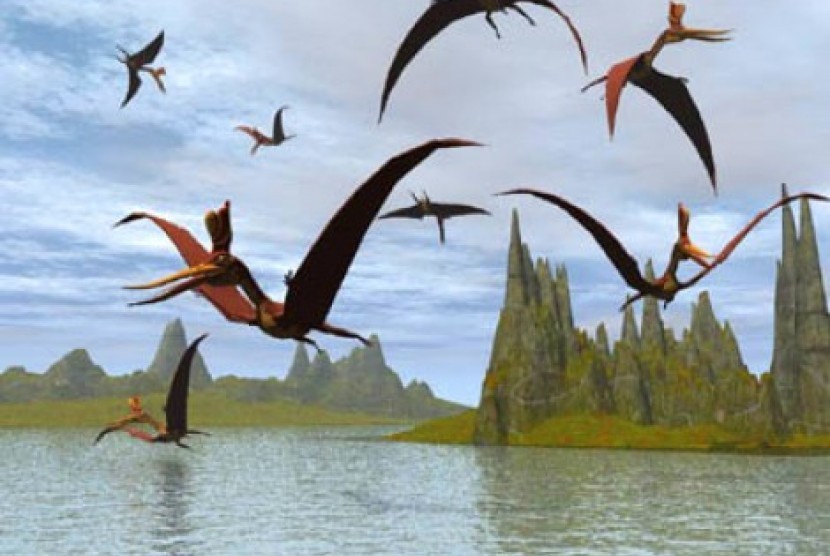REPUBLIKA.CO.ID, UTAH -- Scientists in Utah say they have discovered Tyrannosaurus rex's "great-uncle," a massive predator with a thick skull and large teeth dubbed the "king of gore."
Bones of the 24-foot (7.3-meter) -long dinosaur, slightly smaller than T. rex and older by about 10 million years, were unveiled at the Natural History Museum of Utah in Salt Lake City on Wednesday, and an announcement of the species discovery was published in the scientific journal Plos One.
Scientists hope the find will help them better understand the ecosystem where the predator roamed.
Discovered by workers for the Federal Bureau of Land Management in eastern Utah in 2009, scientists named the animal Lythronax argestes, or "king of gore," for its large teeth and apparent dominance as a predator.
"Discovering the Lythronax pushes back the evolution of the group that gives rise to T. rex, which is something we didn't understand before," said Mark Loewen, a geologist at the University of Utah, who led the dig for the new dinosaur.
"The really cool thing is that this shows that the origins of the last known tyrannosaurs were in the southern part of North America as opposed to Asia or far North America," as previously thought, said Andrew Farke, curator at the Raymond M. Alf Museum of Paleontology in Claremont, California.
Photos of the fossil remains of the newly discovered species were sent to Loewen and his team soon after they were discovered at the southern end of the Grand Staircase-Escalante National Monument, on the Utah-Colorado border.
The group spent the following two years retrieving, preserving and assembling the bones. Then, they traveled to locations where other bones from the tyrannosaur group were being studied, including China; Birmingham, Alabama; Washington, D.C.; and New York.
The Lythronax bones were set between layers of volcanic ash, which allowed scientists to determine the age of the dinosaur by studying the decomposition of the ash crystals that surrounded them.
"This sort of discovery is very interesting and exciting because it's not just another animal from that era but a large predator from that era," said paleontologist Peter Roopnarine, who studies the ecology of dinosaur periods for the California Academy of Sciences.
Roopnarine said being able to learn about the Lythronax will reveal more about the ecosystem at the time of its reign.
"This is going to change our understanding of this older ecosystem," Roopnarine said.


